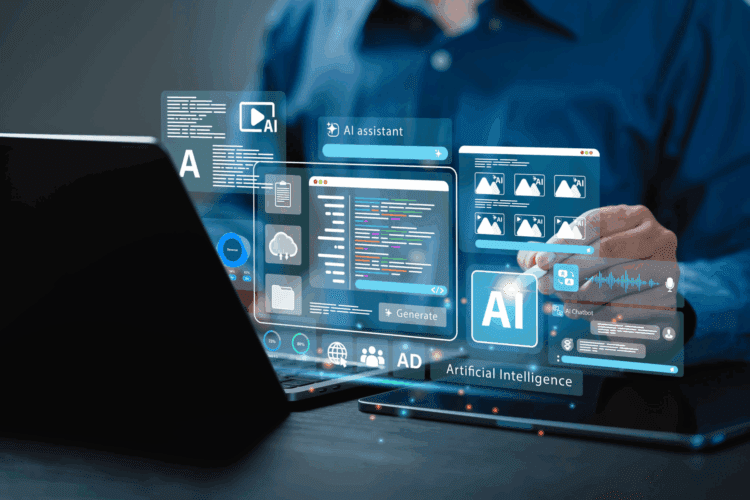Stellar customer experience is a key differentiator to help your business rise above the competition. That’s because now, more than ever, customers demand higher levels of convenience, faster service, and to feel personally valued.
But these expectations are unlikely to be met without using intelligent automation technologies like Artificial Intelligence (AI), RPA, and data analytics, according to McKinsey. Let’s explore six ways you can start using these tools to create a more seamless, enjoyable customer experience.
6 Ways to Use Intelligent Automation to Improve the Customer Experience
1. Predict and Prevent Customer Churn
Most organizations lack the technology to determine precisely why a customer left. That leaves their customer retention strategy to rely on guesswork and loose correlations rather than real data. However, machine learning algorithms can help you track and analyze unstructured data like customer sentiment and behavior to identify potential customer churn.
As a subset of AI, machine learning can quickly analyze large datasets, learn from their insights, and make bias-free decisions accordingly. This capability lets you pinpoint precise bottlenecks in your customer journey that cause customer churn and identify current unhappy customers. With these insights, you can form data-informed strategies to prevent further dissatisfaction. Plus, your employees can swoop in and personally repair relationships with at-risk customers.
2. Chatbots and Self-Service
While some customers still prefer to be helped by a human, the trends point to self-service. 81% of consumers prefer to do online research before contacting a company directly. Tools like chatbots, knowledge bases, mobile apps, and self-service portals can help you meet this demand by allowing customers to seek the information they want at any time, any place. These tools are highly effective at helping clients solve problems. Additionally, they can save you money. Self-service channels cost about $0.10 per contact, whereas live channels like phone and email cost an average of $8.01 per contact , according to Gartner.
Chatbots are among the most popular intelligent automation tools for organizations pursuing digital transformation. These tools can respond to customer requests 24/7 to improve your response time significantly. According to MIT Technology Review, 90% of businesses that have implemented AI-powered chatbots have experienced an improvement in complaint resolution. And as chatbots take over much of customer questions, your employees will gain more time to focus on more critical, complex issues.
3. Reduced Error Rate
Human error is rampant across manual processes. Unfortunately, errors often lead to unpleasant customer experiences since no one wants to wait on hold for an error to be resolved. RPA can help by automating tedious, error-prone manual processes. This way, your employees won’t have to spend hours fixing errors, and your customers can enjoy frictionless experiences.
4. Faster Response Time & Service
Having a lengthy delay in your customer response time can cause serious damage to your brand’s reputation among customers. In fact, 90% of customers say that getting an immediate response to their customer service question is important or very important. That’s why First Called Resolution (FCR) is the KPI with the biggest impact on customer satisfaction. To improve FCR, your employees need immediate access to the information they need to help customers quickly. This is another area where RPA shines. When an employee is helping a customer, RPA instantly displays relevant, customer-specific information on top of whichever program the employee is using. As a result, employees can solve the customer query faster, so the issue is resolved in a single, quick interaction.
5. Personalize Your Customer Experience
You’ve probably experienced the AI-powered algorithms that big companies like Amazon and Netflix use to personalize their customers’ shopping and viewing experiences. Your customers have too, and they expect a similar experience from you.
Fortunately, AI-driven personalization tactics aren’t just for giant corporations with massive budgets. Smaller organizations can benefit, too, by taking a targeted approach. To start, look for specific use cases for AI that will improve your unique customer journey the most. For example, many organizations are using a combination of AI-enabled chatbots to deliver personalized experiences:
- Bots collect real-time insights into a customer’s past interactions with your company.
- Using these insights, a chatbot learns about the customer’s likely intentions and interests. It then uses this information to provide personalized products and services that may appeal to the customer.
- Then, personalized messages can be triggered at the right time, whether through a chatbot message, a follow-up email, or another channel.
6. Gain More Time to Nurture Customer Relationships
Intelligent automation can put a lot of time back into your employees’ days. As RPA bots take over repetitive, time-consuming tasks and chatbots handle most customer questions, your employees can focus on value-added tasks that only humans can perfect. This can include tasks related to innovation, problem-solving, creativity, and one-on-one customer engagement.
It’s truly a win-win: you won’t just have technology working to create fast, seamless customer experiences. You’ll also have employees working to find innovative ways to improve the customer journey and personally nurture customer relationships.
Empower Your Customer Experience Using Technology
Your customers want to feel appreciated and to have their issues resolved as quickly as possible. Intelligent automation allows your employees to surpass customer expectations, whether it’s through rapid, error-free service, convenient product recommendations, or one-on-one engagement.






